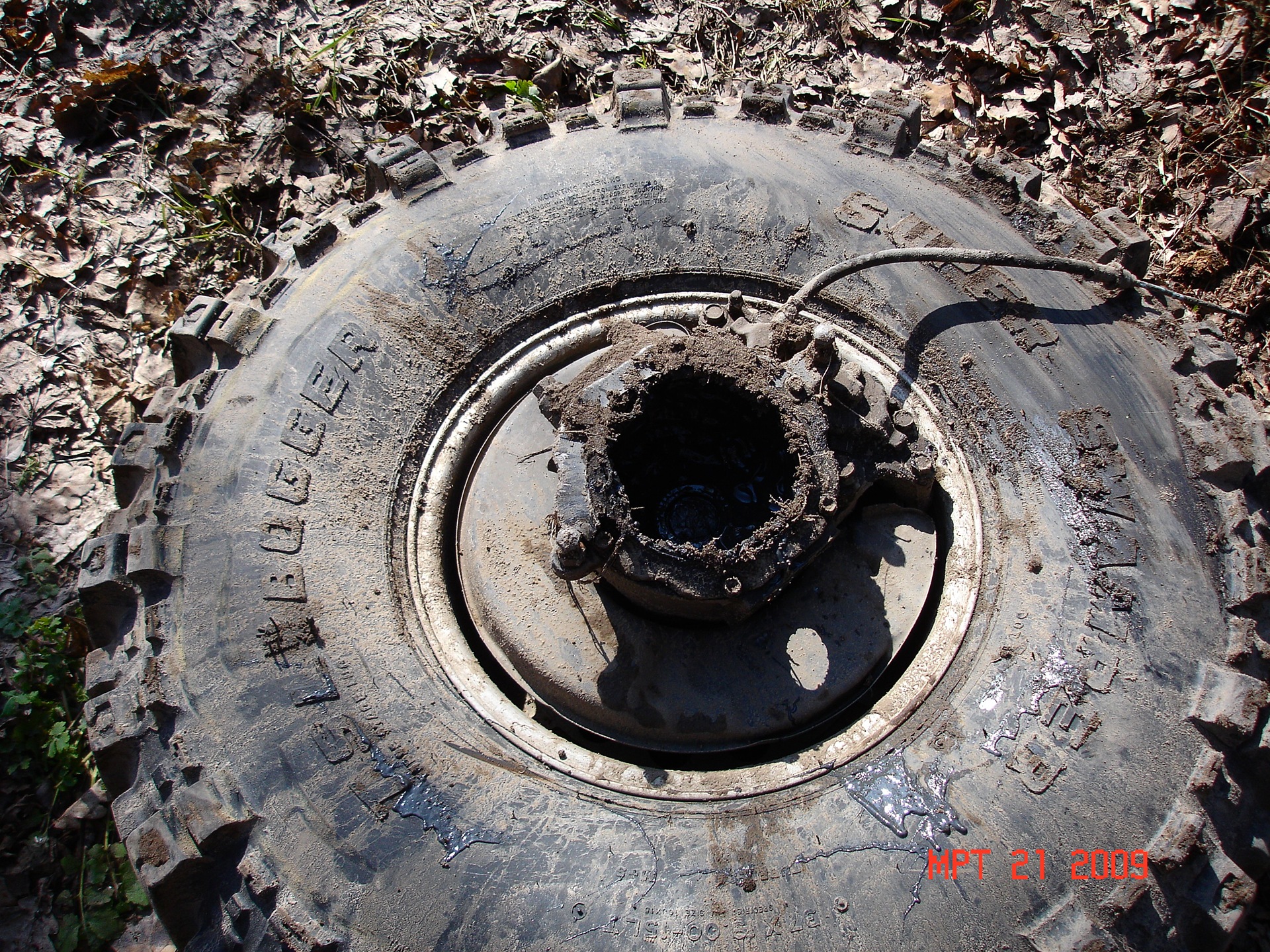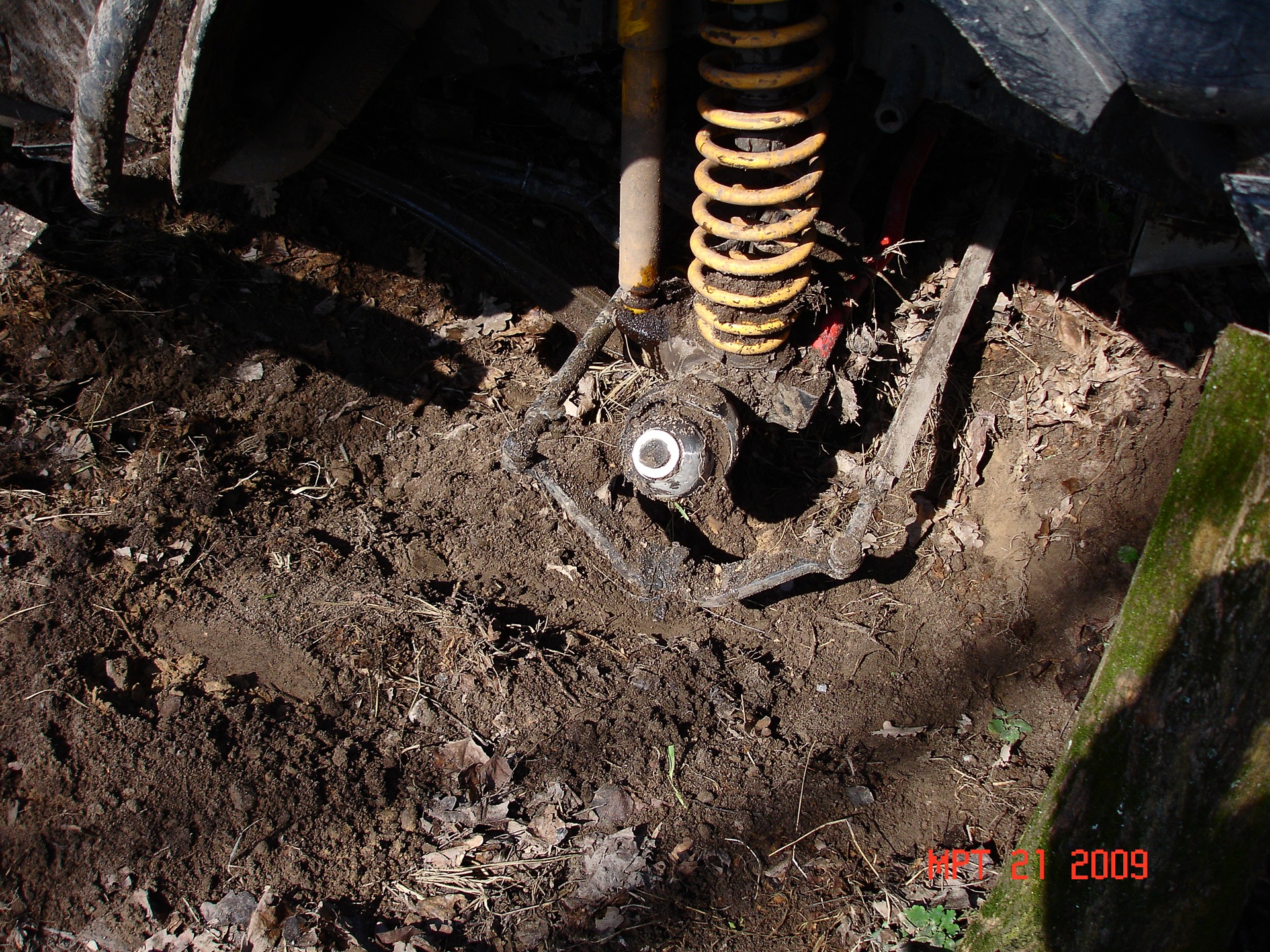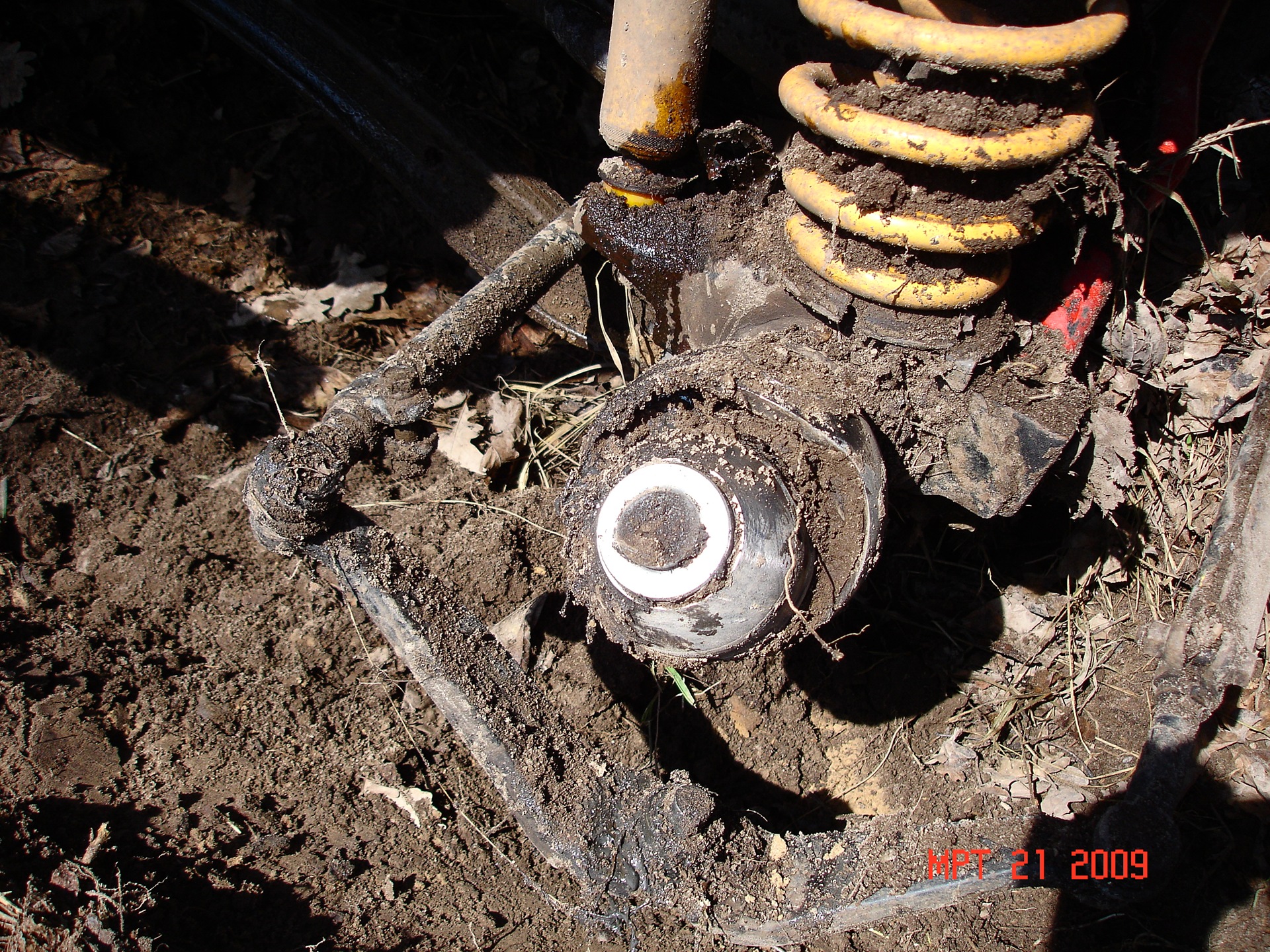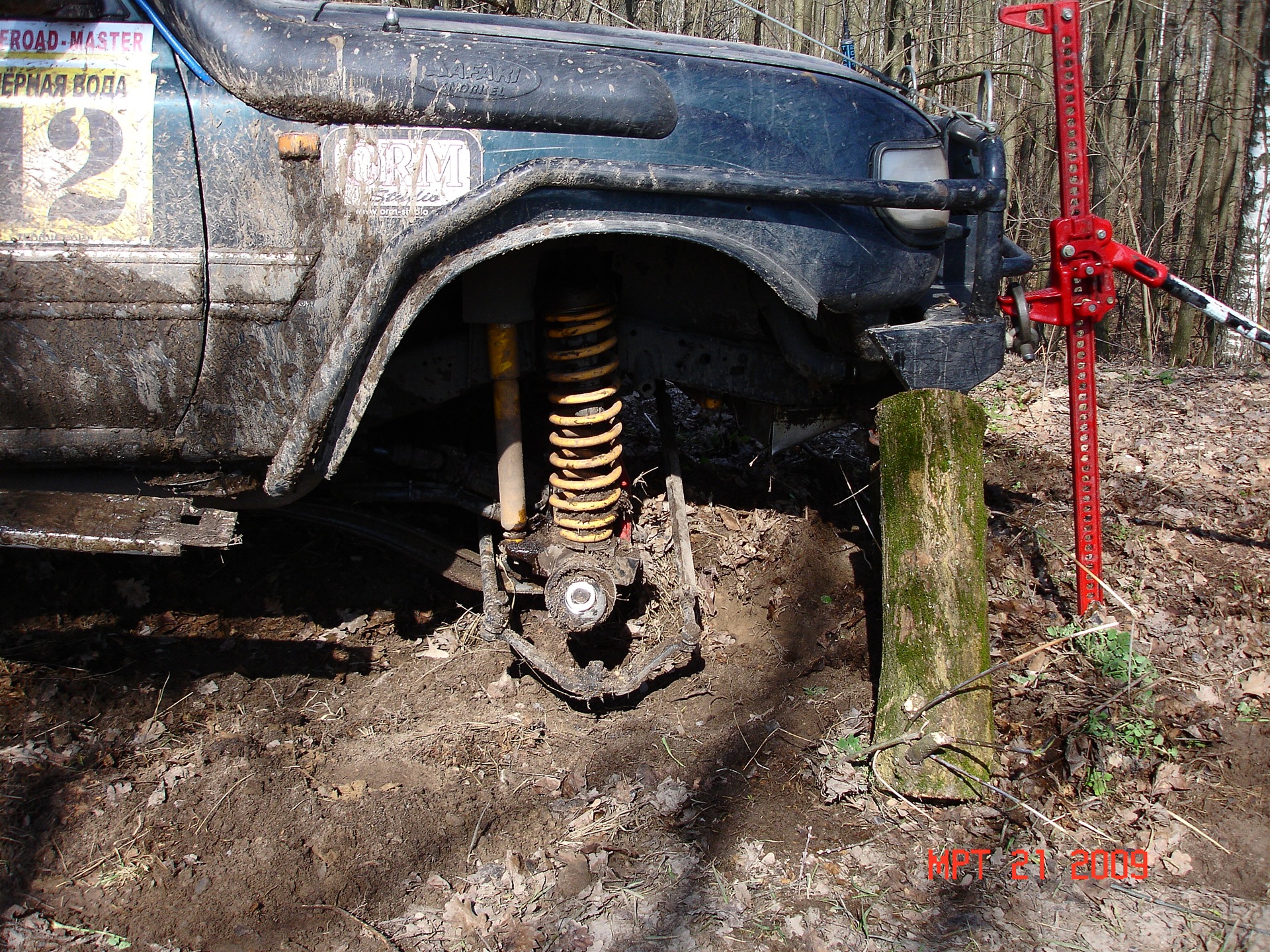SCHULBUS is a dangerous little thing. - Toyota Land Cruiser, 4.2L, 1997
About a year ago, I took part in the preparation of the route for the Bach-Kiev rally-raid 2009 . The task was simple: to drive it along the track a week before the competition, check the change due to the weather, and at the same time, test the new suspension that my friend and colleague installed on his 76th Cruiser.
I must say that the Skulbus is not a rally car, and in fact was supposed to insure the FJ-Cruiser of the organizer of Bahi Sergey Osadchy. In addition to the non-rally Skulbus, the company had: Toyota Tundra on 35 "wheels, Land Cruiser 76 on Race Ranner suspension, rear axle over springs and 35 tires, an almost standard 105, but with a very dynamic driver and matching it 1HD- TE engine (especially transplant), and two EfDzheya - one nearly stock and the second charged on no where - TRD-compressor, the chip on the engine, a more powerful fuel pump, a pilot version of the suspension: front Race Ranner, and behind Elka.
Here's a motley company On Saturday morning in March we set off quietly, the ring was about 200 km, before the start the leader set a maximum speed of 80 km and ... immediately went well over a hundred ...
I drive and think: Maybe 180 km / h?
Breaking the Bogger on every corner, falling out on the outside of every corner, I noticed that Sculbus was not "the weakest link." It turned out that the owner of the FJ Crusera wasted money on the OME suspension: looking at how he was tormented by bumps and dolphins, I quietly drove around and chased the next one.
I must say that the pace was ragged: we either accelerated, then increased the pace even more, and after about half an hour the level of adrenaline went off scale.
And since there was still a task to test the fresh suspension on the 76th Cruiser, we began to change cars. I got the same EFJ, loaded with the most I can't, and his pilot got behind the wheel of my Schoolbus.
I was not a little surprised when on this EfJe I could not catch up with my Schoolbus! This is the drive! After suffering for about five minutes trying not to bury EFJ in a sandy-snowy mess, I found that EFJ was only rear-wheel drive. Hence the constant flickering of the red A-TRAC light, and problems with acceleration ...
Well, that's another matter! We go together with Sculbus, the rest are lost. Then I got lost too: I just flew into the sand at a bend, and an explosive gasoline engine paired with a machine gun went worse than my Sculbus on 37 Boggers across the sand.
The time has come to try the 76 upgraded Cruiser. I must say right away that the non-turbocharged 1HZ at first plunged me into despondency, but everything was blocked by the suspension: on the new Race Runner struts, the car really holds the road in such a way that you only need to release the gas to stop for a smoke break ...
In general, after the next machine change my Skulbuse proved again keen rally driver and crazy driver Serge Osadchy ...
not drive a couple of minutes after the break, and no typing usual speed, I catch your Skulbus that faces toward the woods, and in front of him on the road is my spare tire.
Seryoga comes out, scratches his turnip and says: I don't even know how it happened!

The wheel overtook the Skulbus at a speed of no more than 60 km / h and turned out to be not a spare, but the front right one. The car, having lost steering control, gently buried its nose and stopped ...
You can see what happened in the photos. And the reason was established later: hairpins .
From decent vibrations and shocks at breakneck speed, the studs that were the steering knuckle were released and burst.
I confess, neither before this trip, nor after the previous rally competition, too, I did not check their condition and degree of tightening. In general, I checked it, but I don't remember when. For which he paid. And it was a great success that only iron suffered ...
Colleagues! These studs on Kruzaks have a tendency to self-release. This happens both from the loads during movement, and from the fact that the material flows over time. It is much easier to make it a rule, in addition to regular checking, after a certain mileage to change them. They cost a couple of dollars apiece, and the consequences may be ...




I don't remember everything: a tow truck from outside the city is about $ 200.
And so: the trunnion, bearings, steering knuckle gaskets, studs, brake hoses, grease in the fist, work ... if you take at the usual prices of 700-800 dollars at least.
Considering that a tow truck freely drove up to this place, and while we were waiting for it we arranged a "roadside picnic", it turned out in the best way.
It's good that ended well ... Well, we also make it a rule for ourselves to check everything before sorties ... there were moments and now it's usually a rule =)
A good story, and basically ended well ... not counting kanechno repairs and a tow truck.
But you made a conclusion on your mistakes and for us it will be a lesson)))
My own experience is invaluable, but some lessons need to be learned by correspondence. Thank you for your invaluable experience.
"Forewarned is forearmed!" (
C ) ps / It's good that everything ended well.
Strange, isn't it? Do you remember the anecdote about the Japanese chainsaw and the harsh men, the conquerors of Siberia?
No, where:
"Dzink!" Said the Japanese saw,
"Ah, mother! said the harsh Siberian men and went to chop wood with axes "
Everything breaks, especially if not properly maintained.
50kg! This is tough! :). My probably 20 kilos hangs. And the other day I unscrewed the wheel at Nissan Elgrand, so it feels like it weighs 10 kilograms, no more. Although the wheel is 15, the tire is 215 65 r15, the drilling is ours, the car with a dry weight of 2200, and light ..., but on mine, when it was standard :) 215 80 r16.
So I think, either technology has stepped so much, or just on jeeps, wheels with a large margin of safety, although it is not clear why such a stock on a disk with zero offset and 6 "width. ...
The size is not, but the weight of the wheel also significantly shortens their life. My wheel weighs about 50 kg. And the steering knuckle pins are influenced, first of all, by the nature of the road: the more vibration and alternating loads, the faster they are overloaded.
Clearly, now I will be more attentive to these studs, although my wheels are standard. And for 190,000, I changed the oil seals and brass bushings, I just unscrewed the studs, everything seemed to be a bunch there. Tightened well, the studs did not fall. Apparently the size of the wheels affects this "ailment" of the car.
Well, that's right: the metal also flows. Only slowly. And it looks like it "stretches" or deforms inelastically.
Constant pulling up during maintenance, and constant being under load - that's what the studs "flow". And wheeled, especially when twisted "with all the dope" or a pneumatic wrench - the same thing.
I think I doped myself. There are pins that secure these pins or pins, I don't know how to do it correctly, and regulate the tightening of the bearings by means of steel gaskets under the cover of these very pins. That is, there are eight of them, four at the top and four at the bottom, they attract the steering levers and one square cap, which are at the same time a rod / shaft for the bearing.
Only the question still remains. How can they flow? Or maybe they stretch out?
Honestly, I've read it, I just can't figure out what kind of pins are there? As far as I know, there are like two pivots, top and bottom in the pivot closure, they work on adjustable roller bearings. Where are the pins? And how can they flow?